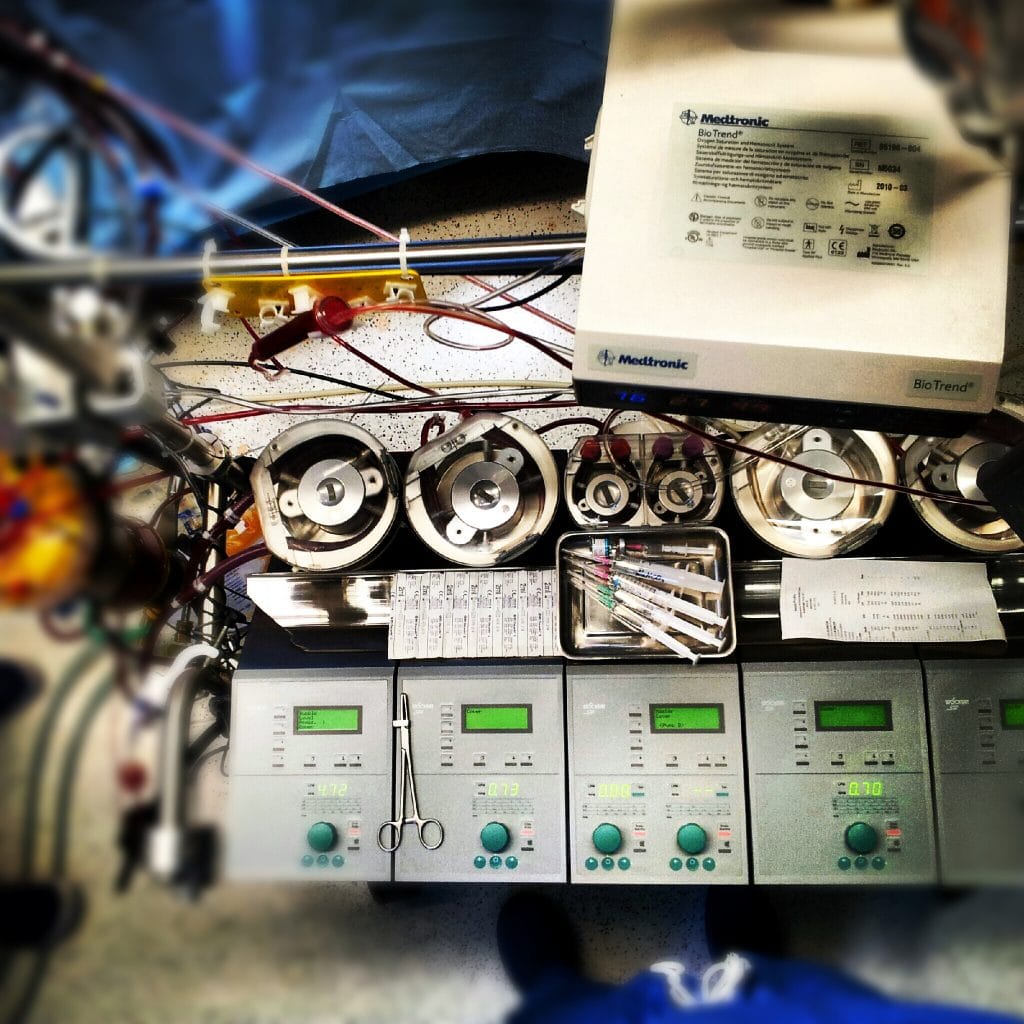Increased Cerebral Mitochondrial Dysfunction and Reactive Oxygen Species with Cardiopulmonary Bypass

Objectives
Neurodevelopmental injury after cardiac surgery using cardiopulmonary bypass (CPB) for congenital heart defects is common, but the mechanism behind this injury is unclear. This study examines the impact of CPB on cerebral mitochondrial reactive oxygen species (ROS) generation and mitochondrial bioenergetics.METHODS
Twenty-three piglets (mean weight 4.2 ± 0.5 kg) were placed on CPB for either 1, 2, 3 or 4 h (n = 5 per group) or underwent anaesthesia without CPB (sham, n = 3). Microdialysis was used to measure metabolic markers of ischaemia. At the conclusion of CPB or 4 h of sham, brain tissue was harvested. Utilizing high-resolution respirometry, with simultaneous fluorometric analysis, mitochondrial respiration and ROS were measured.
Results
There were no significant differences in markers of ischaemia between sham and experimental groups. Sham animals had significantly higher mitochondrial respiration than experimental animals, including maximal oxidative phosphorylation capacity of complex I (OXPHOSCI) (3.25 ± 0.18 vs 4-h CPB: 1.68 ± 0.10, P < 0.001) and maximal phosphorylating respiration capacity via convergent input through complexes I and II (OXPHOSCI+CII) (7.40 ± 0.24 vs 4-h CPB: 3.91 ± 0.20, P < 0.0001). At 4-h, experimental animals had significantly higher ROS related to non-phosphorylating respiration through complexes I and II (ETSCI+CII) than shams (1.08 ± 0.13 vs 0.64 ± 0.04, P = 0.026).
Conclusions
Even in the absence of local markers of ischaemia, CPB is associated with decreased mitochondrial respiration relative to shams irrespective of duration. Exposure to 4 h of CPB resulted in a significant increase in cerebral mitochondrial ROS formation compared to shorter durations. Further study is needed to improve the understanding of cerebral mitochondrial health and its effects on the pathophysiology of neurological injury following exposure to CPB.
